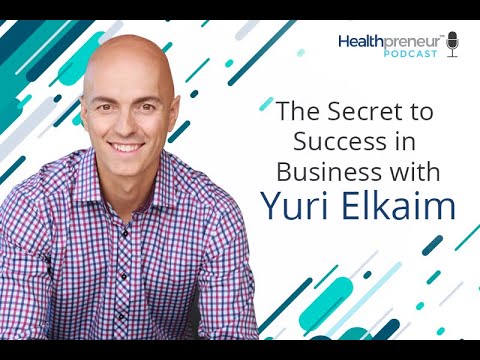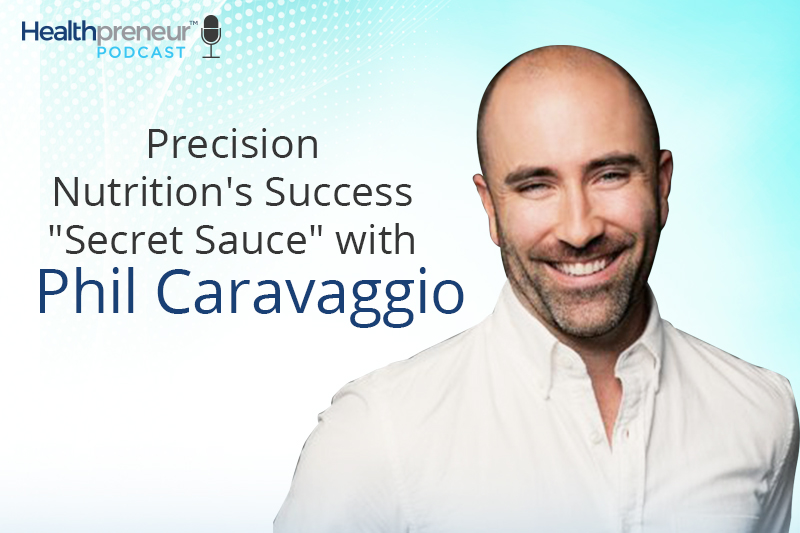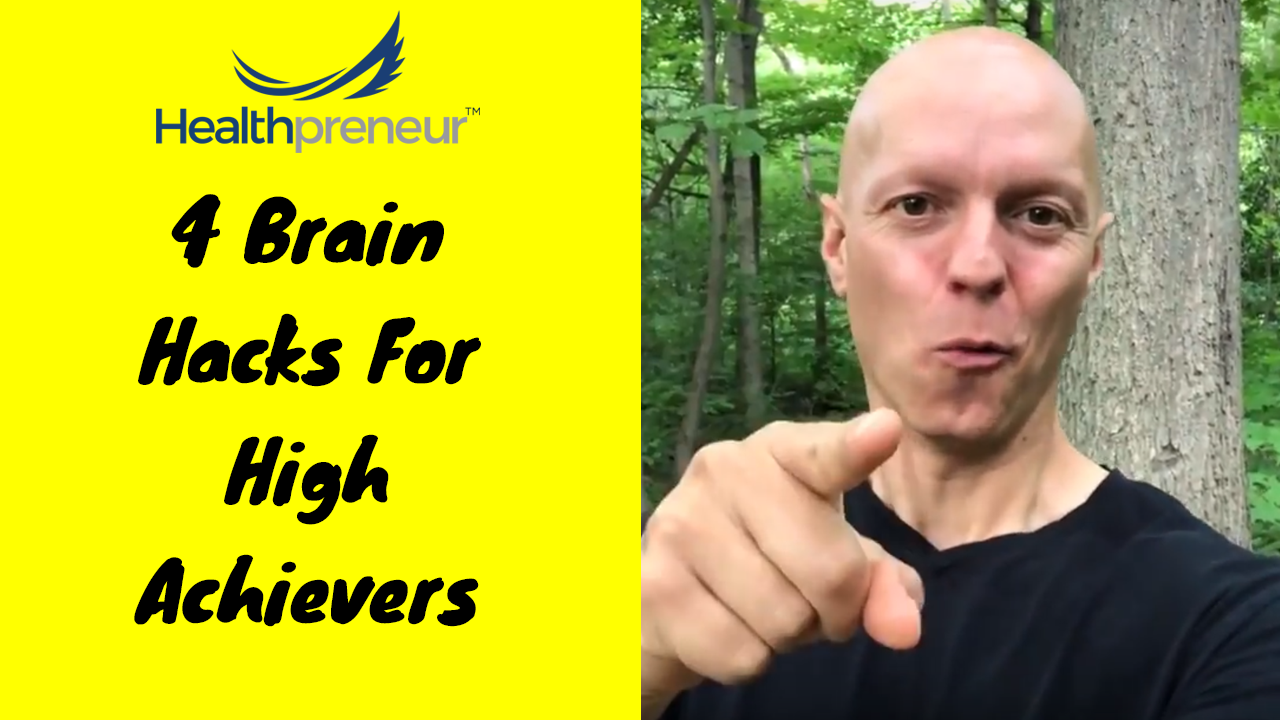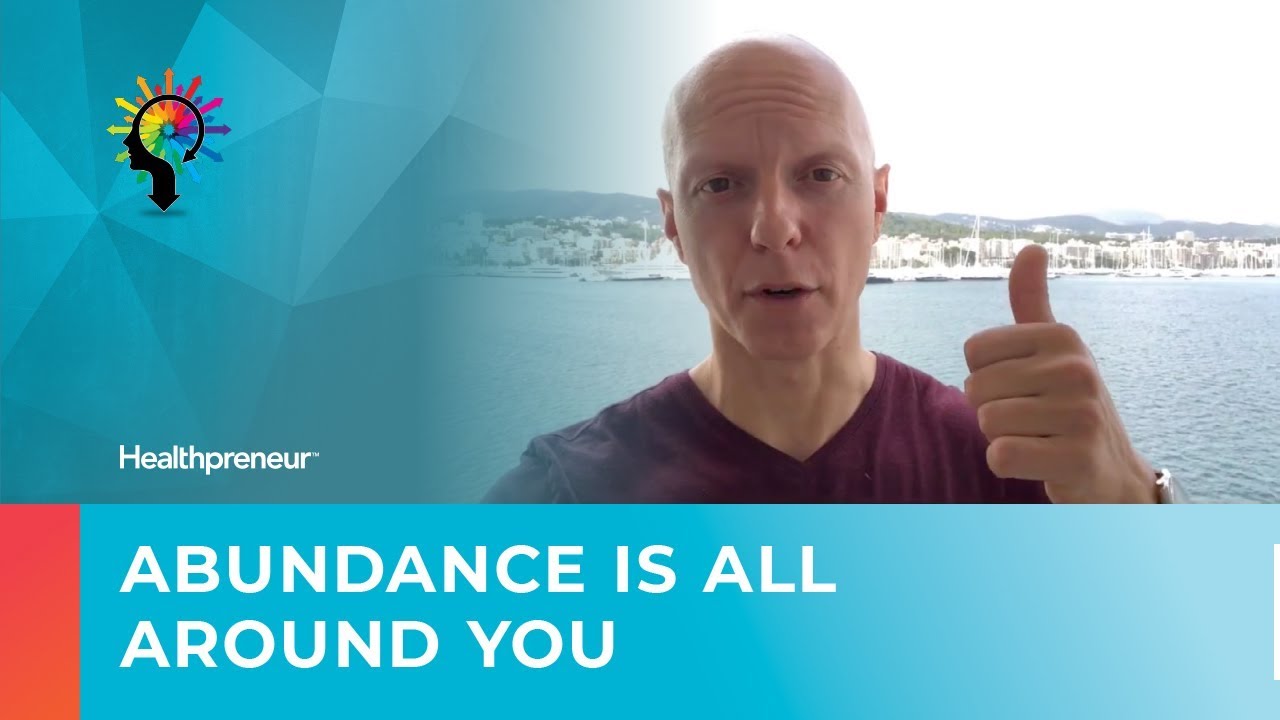The DEATH of the Sales Page
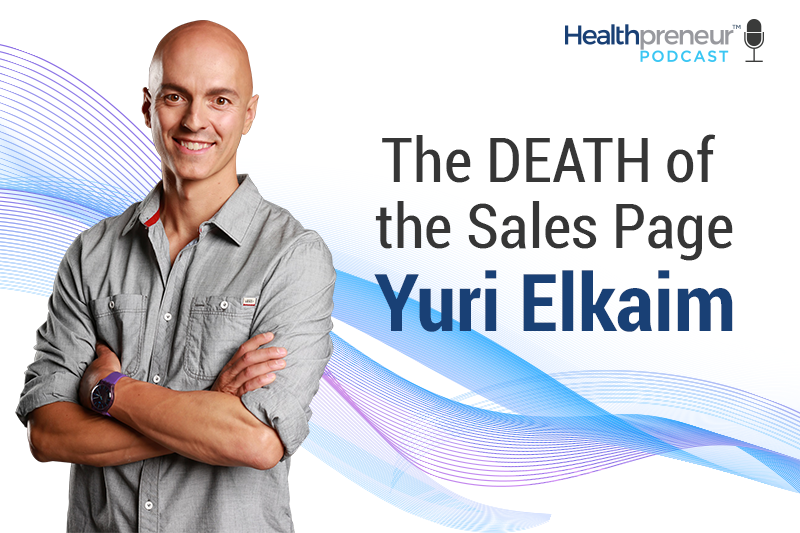
It’s Monday, and you know what that means … Another solo round of the Healthpreneur podcast, where we’re going to have a one on one conversation about moving that needle in your business. Today, we’re talking about the death of the sales page.
Is the sales page dead? Well, not necessarily. But I’m going to talk to you about how you can get tons of sales without using a sales page. If you’re trying to sell high-ticket items, a sales page might not be your best bet. Instead, I’m going to show you how you can communicate with your clients one-on-one in order to gain trust, build a better relationship with them, and help better serve them.
I am going to show you the foolproof system that I use for this. It just works, plain and simple. It has proved its worth time and time again. As I mentioned before, this is primarily for high-ticket items like coaching, workshops, mastermind classes, so this might not be the best strategy for that $10 eBook your selling. This episode is short and sweet—give it a listen, I can guarantee you’ll get something out of it.
In this episode I discuss:
1:00 – 7:00 – What you need to accomplish before you start your communication.
7:00 – 13:00 – The PEAR email process
Transcription
Hey. It’s Yuri, welcome back to the podcast! Hope you’re doing great.
Today we are talking about the death of the sales letter. Do you really need to be spending all your time learning how to write sales copy in order to have a thriving online business in 2018 and beyond?
Before we get into this, we’ve had a few episodes talking about the importance of learning how to write compelling copy. We’ve talked with Jon Benson and Pat Flynn, as well as a few others, about how writing effective copy really makes a difference online. I still maintain that being able to communicate in an effective and influential manner is a very, very important skill to develop.
What you need to accomplish before you start your communication
So I would still recommend you own your craft. Sharpen the saw, if you will, sharpen the ax. I don’t know if you can sharpen a saw. Can you? Or kind of like, remove all the ridges.
Anyway, you want to sharpen the ax and continue to refine your ability to communicate, but here’s the thing. You don’t need to do that just by writing sales pages.
You can do that in the form of writing emails, Facebook ad copy, any kind of communication you’re making to help move someone to a desired outcome that is beneficial for them, and for you as a result of that.
I want to share with you a simple way that you can enroll new clients and customers without having to go through writing sales pages and worrying about these funnels and upsell flows, because, as you know and as you’ve probably dealt with, it’s very overwhelming. And quite honestly, most of us don’t enjoy doing it.
I think I speak for a lot of Healthpreneurs when I say most of us just want to teach, coach, and serve our clients. So if you can relate to that, don’t worry. I got you.
This is coming from someone who spent 10+ years writing sales pages. I don’t even know how many I’ve written. Dozens upon dozens of sales pages. Some have tanked, some have done well, but it’s not an activity that I enjoy doing—especially in the old format of spending all of your time hurting your brain and trying to come up with the right words and all that.
What I’m about to share with you is really, really helpful if you have any kind of higher end service—specifically coaching or a higher end program. If you’re selling $10 e-books … First of all, I would strongly recommend you stop doing so.
And if you want help with that, be sure to attend our most recent online workshop, called The 7-Figure Health Business Blueprint. It’s free. You can join us over at healthpreneurgroup.com/9 for that. I’ll walk you through why that’s a dying model and what to do instead in 2018 and beyond.
Now, if you’re offering any type of coaching—whether it’s virtual, in person, group coaching, whatever you want—what I’m about to share with you will make a big difference. Especially if you have any kind of following.
If you’ve got an email list or a social following that you can communicate with, here’s what I’d recommend you do. And there are two things you have to know before you deploy this.
Number one: You have to have a program or a service that actually helps people.
If you don’t have anything created, do that first. Or at least have a very clear outline of what you’re going to be delivering, but that has to be preceded by the promise. Any time you ask anybody to do anything—whether it’s click on this link, click on this ad, go visit this, buy here, buy this—it needs to be accompanied by a promise. Because we’re saying, “If you click on this, I promise you this benefit.” Right?
What is the benefit? What is the promise of the solution you’re offering? Is it, “I’m going to walk you through a four step system to lose 30 pounds in 30 days”? Be very clear and very singularly focused on that promise.
If you start diluting your promise like, “I’m going to help you lose weight, have more energy, overcome psoriasis” and all this other stuff, it becomes too diluted. It’s almost like walking by one of those restaurants in some dodgy areas of the city that say, “We are the Mexican-Canadian-Italian-Jamaican restaurant.” Okay…
As the famous saying goes, “You can’t please everyone.” Or, if you try to please everyone, you end up pleasing no one, right?
So make sure there is a very specific promise you can make for your audience and your target with respect to that solution. So, now you have the promise.
Number two: Clearly articulate how you are delivering this.
How are you delivering this outcome for your potential clients and customers? Break that down. Step one, we’re going to do this. Step two, we’re going to do this. As a benefit, you’re going to experience this.”
Really break that down so people get a very clear understanding of what they’re in for. For the customer, this process is almost like putting your hand in a black box that you can’t see inside. Who knows what’s in there?
There might be some piranhas inside the black box, maybe there are some mice. They’re a little bit apprehensive to jump into things when they don’t have enough information to make a informed decision, especially if it’s something in the higher price point.
You want to give people enough information where it’s not overwhelming, but you’re still able to give them a clear path. You’re going to show them, “Here’s how we’re going to go from where you are to where you want to be, here are the steps involved, and now that you have that, here’s what you’re going to deploy.”
The PEAR email process
I call this a PEAR email, P-E-A-R. This stands for Personal, Personalized, Expecting A Response. You can do this via social media. You can do this if you have an email list.
So let’s just use the example of an email list. Subject line is first name, so it’d be Yuri. The body copy of the email would be something along the lines of this: “Hey, Yuri. I am starting up a new program that is going to help women or people like yourself lose 30 pounds in 30 days. Would you like to join us?” Sign off with your name. Let’s break that down for a second, okay?
We talked about getting very clear on your promise, right? Because the promise is what you’re putting into that first sentence. So, “Hey, Yuri. I’m putting together,” or “I’m running,” or “we’re opening up our program.” Whatever it may be.
Now we insert the promise. “That helps women who are over 40 feel like they did in their 20s,” or whatever the promise is.
You have that promise in there, and then it’s simply, “Would you like to join us?” That’s it.
This email is going to get responded to.
If you send it out to an email list of 1,000 people or 100,000, you’re going to have a lot of responses. This is where you need to have the deliverables—how you’re delivering this program—ready to go because when people respond. You’re going to individually respond to them via Gmail or whatever service you’re using to give them the details.
You would say, “Here’s what we’re going to do. Here’s how we’re going to do it. Here’s the price. Would you like us to save you a spot?” What we’re doing here is creating a one-on-one conversation. You’ll always have greater conversions where there are conversations. Conversations lead to greater conversions.

So what we’re doing is, we’re taking people out of your broadcast and just having them individually respond to you, to whatever customer service email you have. We run everything out of Gmail, so we’ll send a broadcast email through a Maropost list, which is our email service that we use. If you use Aweber or ActiveCampaign, whatever it is you use, you send out the broadcast with that email.
The responses would come back to your customer service email. For instance, maybe that’s hosted within Gmail. Then you’re going to individually respond to those people.
Give them the details of the program—and you can have an assistant do this—and all you’re going to do is move people into the next step, so they have all the details.
“Would you like to join us?” They say, “Sure.”
You send them the payment link, and we’re done. You don’t even need a sales page for this.
We did this for our YouTube masterclass that we ran in December. I simply sent an email to my list and I said, “Hey, guys. We’re looking to start a new masterclass on YouTube, which is going to show you how to build a great YouTube channel that actually generates revenue for your business. Would you like to join us?”
We had hundreds of responses.
Now, the program was priced at $997, so not everyone joined, obviously, but we had a really good response from those who did enroll. We had about 35 people enroll, which was awesome.
We didn’t have a sales page! There was no funnel, no upsells, nothing. All we did from the get-go was have that promise. We knew exactly what that program or was going to deliver. We were able to break down the steps of, “Here’s what we’re going to do. Step one, step two, step three, step four. Here’s how it’s going to be delivered to you,” so they can see the journey, if you will. The process.
Then it was simply, “Well, let us know if you want to join because we’re starting in a week. We need to know as soon as possible, and we’re limiting this to X number of people.” That is always going to convert better than sending people to a sales page to buy something for $1,000.
When you engage people in conversation, you will always have greater response, you’ll have greater conversions, and now you start to build an intimacy with your audience that really starts to extract the best clients out of a bigger list.
Now you’re starting to speak to them in a more individual manner based on where they’re at and where they want to go.
I don’t know if the sales page is truly dying. There’s always going to be a need to communicate what it is we offer, and you can think of it as a sales page or a video sales letter, but quite honestly, all that matters is that you’re able to understand where people are at and show them the promised land. Show them how they’re going to get there and whether that’s done by email or a simple Facebook message. I forgot to mention, you can also do this same thing on Facebook.
You can reach out to people you know who might be an ideal prospect or client for this specific program, and you can say, “Hey, John. Just thought I’d let you know we’re running one of our bestselling programs. It’s going to help you achieve X.” The desired outcome or the promise.
“Would you like to join us?” They’ll be like, “Sure. Cool. Send me some more information.”
Right away, you respond with how you’re going to do it. “Would you like me to save you a spot?” They do.
You send them the payment link. Done.
That’s how cool this is. You can start to tap into your existing network of people who already know, like, and trust you, build a better relationship with them, and move them to the next step to better serve them.
Once again, I wouldn’t recommend this if you’re selling a $10 eBook because it’s probably not worth your time, but if you’re doing anything that is upwards of about $500 or more, this is a great strategy that can work very, very well. It’s a great way to acquire new coaching clients, selling courses, anything like that.
It works like gangbusters. We’ve been using this for four or five years to fill our masterminds and workshops.
So give it a shot today, and if you enjoyed this, then be sure to subscribe to the podcast. We have great episodes coming your way Monday, Wednesday, and Friday.
Every Monday, I do a solo round like today. Wednesday and Friday, we interview awesome guests. This week, we’ve got an awesome interview with Tony DiLorenzo on Wednesday where we’ll talk about how to have an amazing marriage for life and business, which is kind of an offshoot of our typical stuff, but it’s a really, really good episode.
On Friday, we’re going to be talking about the secrets of launching products that people actually want with Kelly Bejelly, so stay tuned for that. And once again, thanks so much for joining me. I hope you’ve enjoyed this episode.
Most importantly, take action on what we’ve talked about, and I’ll see you on Wednesday.
***********************************************************
If you enjoyed this episode, head on over to iTunes and subscribe to Healthpreneur™ Podcast if you haven’t done so already.
While you’re there, leave a rating and review. It really helps us out to reach more people because that is what we’re here to do.
What You Missed
On the last episode, I spoke with Erin Palinski who shared with us how she was able to get on a bunch of national broadcasts and get extensive coverage in magazines without a publicist. She did it all on her own putting in all the work and she has some amazing tips for anyone who might be thinking of doing the same.
If you’re thinking about seeking out major media coverage—or any media coverage at all—this is an excellent episode to check out.
Related posts
December 7, 2018
Precision Nutrition’s Success “Secret Sauce” with Phil Caravaggio
I’ve got another awesome episode…




